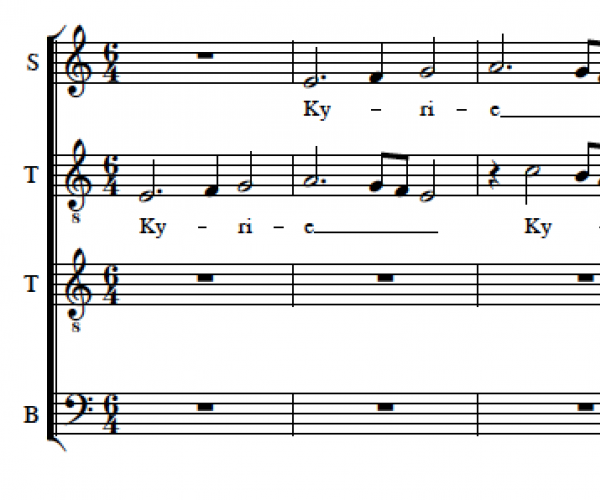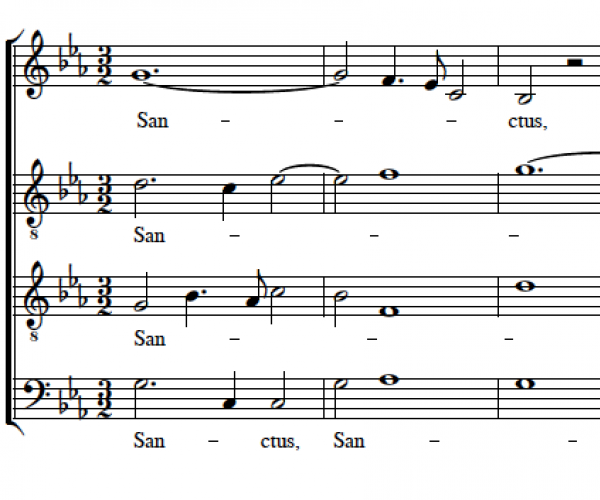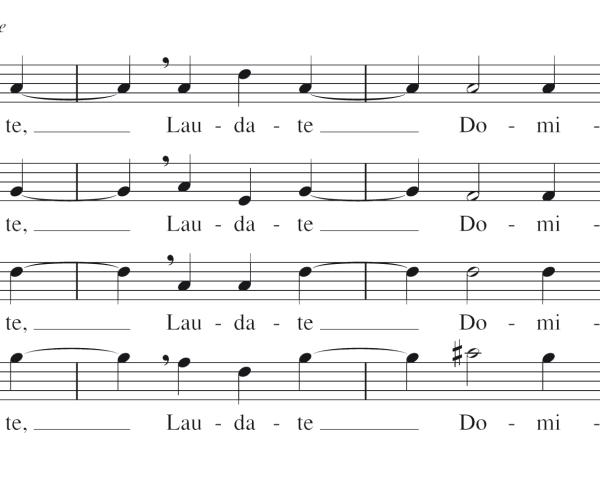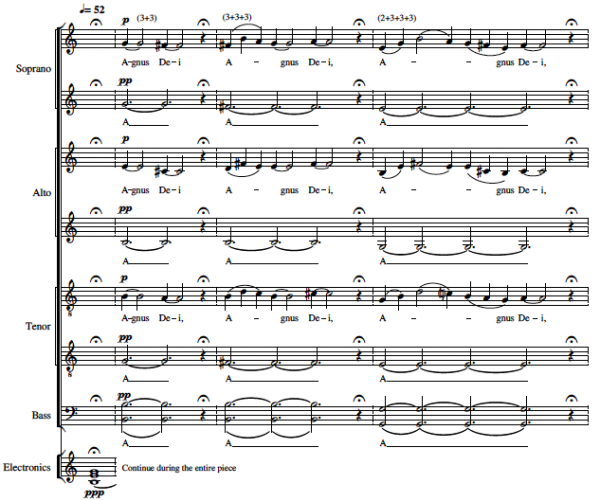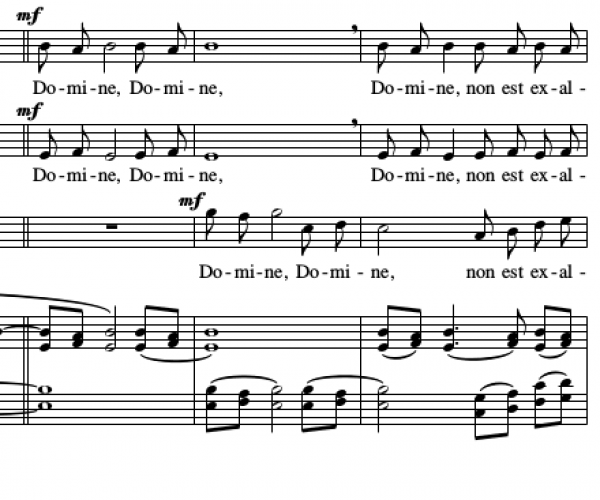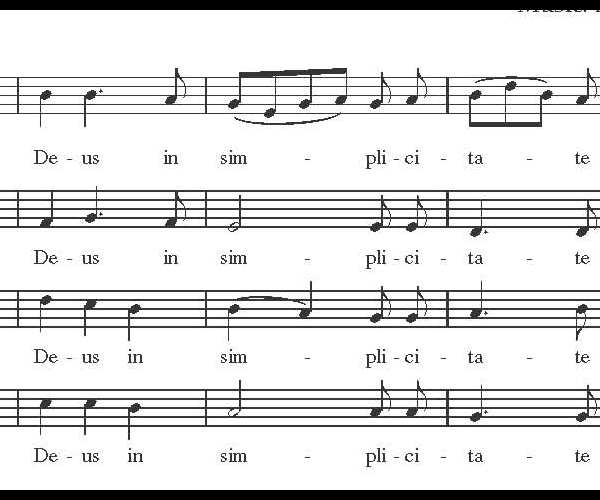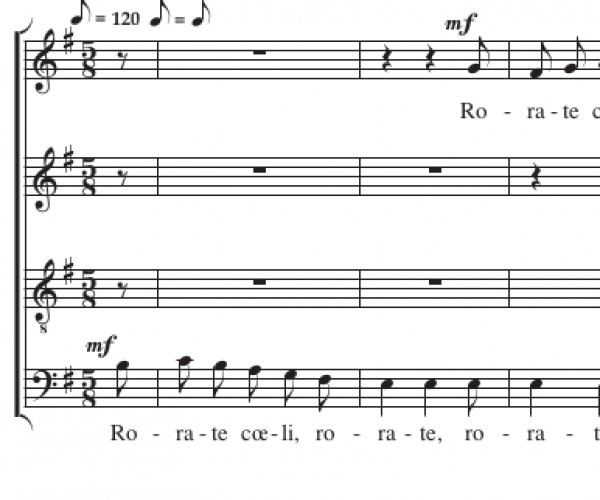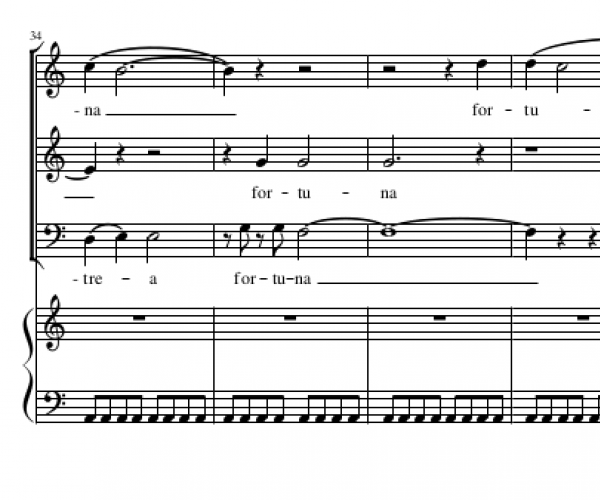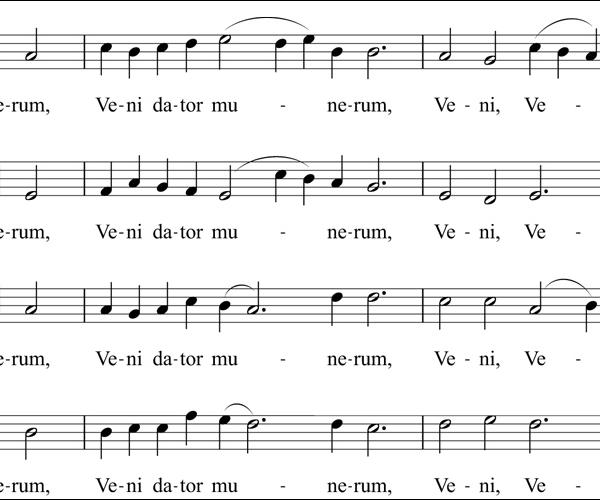Scores
- August De Boeck (1)
- Cypriano De Rore (1)
- Frank Agsteribbe (1)
- Jacob Obrecht (1)
- Jacques Nicolas Lemmens (1)
- Jan Van der Roost (2)
- Johannes Ockeghem (1)
- Kristiaan Van Ingelgem (1)
- Lieven Duvosel (1)
- Lodewijk De Vocht (1)
- Ludo Claesen (2)
- Noor Sommereyns (1)
- Norbert Rosseau (1)
- Paul Steegmans (1)
- Peter Benoit (1)
- Philippus De Monte (1)
- Sebastiaan van Steenberge (1)
- Vic Nees (2)
- Vigdis Hansa Elst (1)
- Wim Henderickx (1)
From Dufay, the profane song l'homme armé would become one of the most beloved cantus firmi. It originated in the second half of the 15th century. The popular melody has been used in more than thirty masses during the Renaissance period, of which the ones in Dufay, Ockeghem and Busnois are the earliest in the series. Jacob Obrecht paid tribute to his teacher Antoine Busnois by copying his composition of this melody as cantus firmus identically in his Missa l'homme armé.
This mass has no exact composition date and originated somewhere between 1450 and 1480.
Laudate Dominum by Sebastiaan van Steenberge is a challenge for an amateur choir and a refreshing liturgical work.
The Missa Brevis has 5 parts: Kyrie, Gloria, Sanctus, Agnus Dei and Halleluja. The complete score was published by Norsk Musikforlag. There are also versions for male and female choir, always with optional electronics.
Ludo Claesen wrote Domine non est exaltatum (psalm 131) for a colloquium in August 2016. The feasibility for an average church choir was an important criterion.
With Domine Deus in simplicitate, Ludo Claesen takes us to Gregorian chant. The beginning of the composition refers to the original melody of the Gregorian hymn. Claesen does not literally copy the melody line, but retains the idea behind the practice: the melismatic singing or in other words, the singing of several notes on a syllable.
Paul Steegmans wrote a simple religious work: Ego sum panis, suitable for liturgy or concert.
Jan Van der Roost's Rorate Coeli was first published in 2009. It's an excellent work of easy to moderate difficulty.
Fortuna vitrea est is a three-part work with piano accompaniment based on a beautiful saying in Latin. Originally, this piece was written for SSA, but has not yet been performed in that line-up. Especially for Koor&Stem, Vigdis reworked the piece into a version for SAB with piano, the existing material shaped a brand new piece. The composer wrote a number of pages around the text Fortuna vitrea est tum cum splendit (Happiness is like glass, when it is at its shiniest...) only to unleash onto the audience the pointe frangitur (it breaks) in short notes in the last bar as a finale of the piece.
In Veni Sancte Spiritus Frank Agsteribbe combines pure Gregorian chant with simple homophonic settings into a tasteful whole.
Pages
Register for our newsletter
We keep you informed 4 times a year about repertoire news, info about Flemish composers, new acquisitions in our library, webshop or freely downloadable scores on Koorklank

